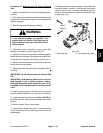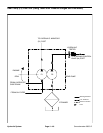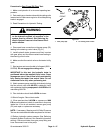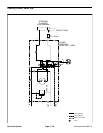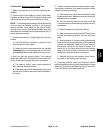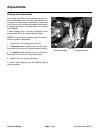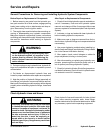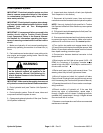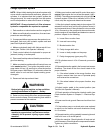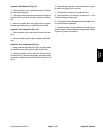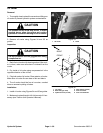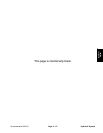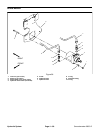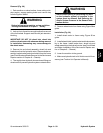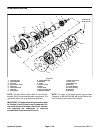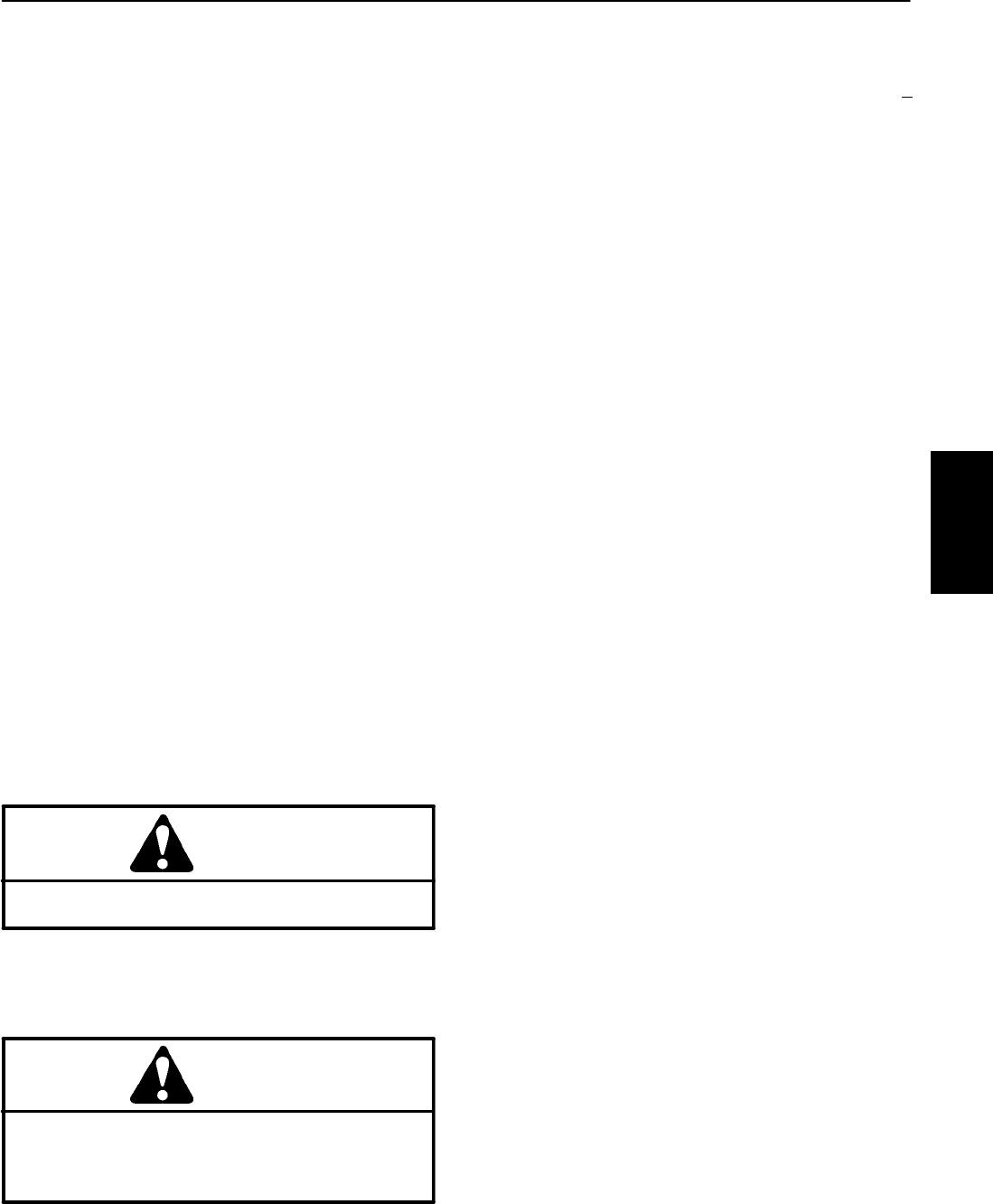
Rev. B
Groundsmaster 3505--D Hydraulic SystemPage 4 -- 53
Charge Hydraulic System
NOTE: When initially starting the hydraulic system with
new or rebuilt components such as motors, pumps or lift
cylinders, it is important that the hydraulic system be
charged properly. Air must be purged from the system
and its components to reduce the chance of damage.
IMPORTANT: Change hydraulic oil filter whenever
hydraulic components are repaired or replaced.
1. Park machine on a level surface and turn engine off.
2. Make sure all hydraulic connections, lines and com-
ponents are secured tightly.
3. Ifcomponent failurewas severe orthe system iscon-
taminated, flush and refill hydraulic system and tank
(see Flush Hydraulic System).
4. Make surehydraulic tank is full. Add correct oilif nec-
essary (see Traction Unit Operator’s Manual).
5. Check control cable to the hydrostat for proper ad-
justment, binding or broken parts.
6. Disconnect fuel stop solenoid lead to prevent the en-
gine from starting.
7. Make sure traction pedal and the lift control lever are
in the neutral position. Turn ignition key switch and en-
gage starter for ten (10) seconds to prime the traction
and gear pumps. Wait fifteen (15) seconds to allow the
starter motor to cool and then repeat cranking proce-
dure again.
8. Reconnect fuel stop solenoid lead.
WARNING
Before jacking upthe machine, reviewand follow
Jacking Instructions in Chapter 1 -- Safety.
9. Raise one front wheel off the floor and place support
blocks under the frame. Chock remaining front wheel to
prevent movement of the machine.
CAUTION
One front wheel will be off the ground. Make sure
machine is supported so it will not move and ac-
cidentally fall to prevent injuring anyone under
machine.
10.Make sure traction pedal and lift control lever are in
neutral. Start engine and run at low idle speed (1400 +
50 RPM). The charge pump should pick up oiland fill the
hydraulic system. If there is no indication of fill in 30 se-
conds, stop the engine and determine the cause.
11.After the hydraulic system starts to show signs of fill,
actuate lift control lever until the lift cylinders moves in
and out several times. If the cylinders do not move after
10 to 15 seconds or the pump emits abnormal sounds,
shut the engine off immediately and determine cause or
problem. Inspect for the following:
A. Loose filter or suction lines.
B. Incorrect hose r outing.
C. Blocked suction line.
D. Faulty charge relief valve.
E. Loose or faulty coupler on the pump.
F. Faulty charge pump (gear pump P2).
12.If lift cylinders move in 10 to 15 seconds, proceed to
step 13.
13.Operate the tractionpedal in theforward and reverse
directions. The wheel off the floor should rotate in the
proper direction.
A. If the wheel rotates in the wrong direction, stop
engine, remove lines from rear of hydrostat pump
and reverse the connections.
B. If the wheel rotates in the proper direction, stop
engine.
14.Adjust traction pedal to the neutral position (see
Traction Unit Operator’s Manual).
15.Check operation of the traction interlock switch (see
Check Interlock System in Chapter 5 -- Electrical Sys-
tem).
16.Lower machine to ground. Remove chock from front
wheel.
17.If the traction pump or a wheel motor was replaced
or rebuilt, run the traction unit so all wheels turn slowly
for 10 minutes.
18.Operate traction unit by gradually increasing its work
load to full over a 10 minute period.
19.Stop the machine. Check hydraulic oil level and ad-
just ifnecessary.Check hydrauliccomponents forleaks.
Tighten any loose connections.
Hydraulic
System



